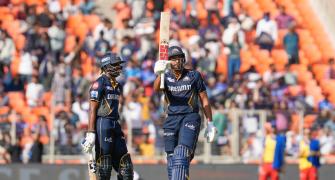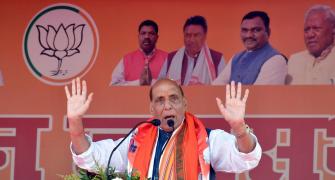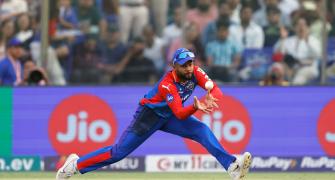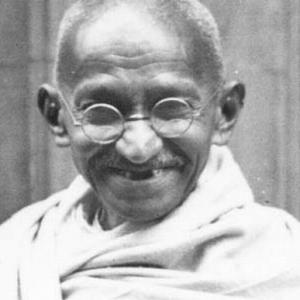India is less violent, privately and publicly, than ever before, says Devesh Kapur
Amidst the gloom in the state of affairs in India, there is one surprising piece of good news. Although the recent exposé in Tehelka magazine on the Delhi police and rape victims has raised troubling questions, violence in India has been declining, albeit modestly. This might seem surprising -- the media is full of reports of violent crime and since we are now conditioned to view any semblance of apparently good news with great scepticism, a close look at official data is warranted.
The most obvious manifestation of violence is homicide. While crime records in India are notoriously unreliable -- especially in recent years, as the police simply refuse to file first information reports in many cases -- the least unreliable data are those for homicides. Even today, dead bodies are difficult to deny and hide. This is true not only for India, but across the world. According to official data compiled by the National Crime Records Bureau, the murder rate in India rose from 25 per million in the 1960s to 35 per million by the late 1980s, and 45 per million in 1991-1992. But, in the two-odd decades since, it has steadily dropped to just above 28 per million in 2009. To put it differently, while India added about 380 million people in the last two decades, the absolute number of murders declined by a fifth between 1992 and 2009.
If murders are a manifestation of private violence, what about the most salient manifestation of public violence -- riots? Here, again, looking at data over the past half century, the number of deaths in riots peaked in the early 1980s. Since then the number has declined steadily -- from 157 per million in 1981 to 54 per million in 2009, the lowest level ever in the last 50 years (there was an unusual dip in 2007, which was probably a statistical anomaly).
But what about the claim that while violence in general may have declined, that aimed at particular groups may have increased? The case of violence against women is instructive in this regard. A recent paper (by Lakshmi Iyer, Anandi Mani, Prachi Mishra and Petia Topalova, 'The power of political voice: women's political representation and crime in India', January 2012. External link here) finds that an increase in female representation in local government has resulted in a significant rise in documented crimes against women in India. This increase, the authors suggest, is actually good news, and is being driven primarily by greater reporting rather than the greater incidence of such crimes. Having more women political leaders, particularly at the local level, has a motivating effect on the police to take crimes against women more seriously.
It could be argued that homicide rates and riots reflect private and local greed and grievances -- and, though deeply troubling, they do not have systemic implications in the way that political violence does. Indeed the endemic high levels of political violence in India in the 1970s and 1980s had led the late Myron Weiner to comment on the "Indian paradox" -- democratic stability despite high levels of political violence.
The most endemic and enduring forms of political violence in India have been communal and electoral violence on the one hand, and insurgencies on the other. The most notorious examples of the former in the last three decades have been the anti-Sikh and anti-Muslim pogroms in 1984 in Delhi and 2002 in Gujarat. During the same period, insurgencies in Punjab, Kashmir, the north-east and that led by the Maoists have been the principal sources of deadly political violence. A new phenomenon has been terrorist violence, seared in the public mind by the Mumbai attacks of 2008.
While precise data on electoral violence are not available, there is a broad sense that there was an upsurge in electoral violence in India from 1967 to the mid-1990s, a manifestation of greater political competition and resistance by local elites to the growing agency of subaltern groups. Since then it has become relatively muted, the result of the real gains in social and political power amongst hitherto marginalised groups as well as of the Election Commission's institutional leadership.
In 2010, violence in Kashmir was barely a tenth of its highest level at the beginning of the decade (in 2001); in the north-east, it was just a fifth of its peak in 2000; while communal violence also plummeted to a tenth of the 2002 level. Indeed, in the last decade all forms of political violence have declined markedly, save one -- Maoist-related violence. Not only has this exception remained at high levels, but it also increased towards the end of the decade.
Today casualties related to Maoist violence exceed those from all other sources of political violence combined, underscoring just how much work the Indian State needs to do to restore confidence among the country's tribal populations. And apart from the Mumbai attacks of 2008, terrorism-related violence that is unconnected to the principal insurgencies in India has not increased.
Purists will, of course, question -- as they should -- the quality of this data. Though there is little doubt that the figures for each year are unlikely to be accurate, what's more important is the trend. And that is quite unambiguous. Murderous violence in India -- whether private or political -- has been at its lowest level in recent decades. It is still higher than what a just and fair society should tolerate, and it could well reverse if institutional weaknesses are not checked. But that should not detract from an unheralded but real accomplishment.
The writer is director of the Centre for the Advanced Study of India at the University of Pennsylvania








